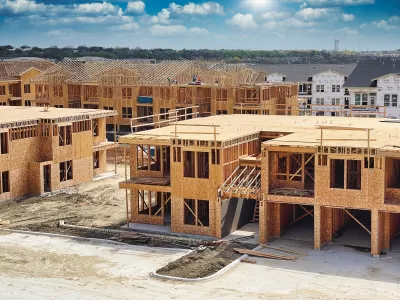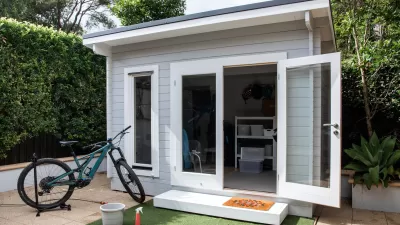Legislators in a state that so often touts its policies as the opposite of California’s defeated several bills that would have made housing construction easier, leading to concerns that a constricted housing market may exacerbate the housing crisis.

For decades, Texas land use and zoning policy has gone in a different direction than much of California, writes Duncan Hosie in an opinion piece for The Dallas Morning News. “Its land use and zoning regulations are less stringent. And affluent homeowners and bureaucrats have less power to block housing. As a result, more housing gets built every year in Texas than anywhere else, and far fewer people are rent burdened.”
But after the failure of several zoning-related bills to pass in the state legislature, Hosie charges Texas state legislators with being “all hat, no cattle” when it comes to their staunch opposition to ‘California-style’ policies, noting that NIMBY obstructionism and the unintended consequences of the California Environmental Quality Act (CEQA) have led to one of the nation’s worst housing crises.
The Texas bills in question would have permitted accessory dwelling units (ADUs), reduced minimum lot-size regulations, and “curbed so-called compatibility restrictions that limit the height of apartment buildings near single-family homes.” Hosie writes that “Disturbingly, many Democrats and Republicans in Texas trotted out the noxious NIMBY arguments that have reigned supreme in California to sink these proposals.”
According to Hosie, “while California offers a cautionary tale of bad housing policy, its growing YIMBY movement is charting a different course.” Texas legislators may want to look to this movement as a more effective model to “avoid the mistakes of its archrival.”
FULL STORY: Texas is going California on its housing policy

Alabama: Trump Terminates Settlements for Black Communities Harmed By Raw Sewage
Trump deemed the landmark civil rights agreement “illegal DEI and environmental justice policy.”

Planetizen Federal Action Tracker
A weekly monitor of how Trump’s orders and actions are impacting planners and planning in America.

The 120 Year Old Tiny Home Villages That Sheltered San Francisco’s Earthquake Refugees
More than a century ago, San Francisco mobilized to house thousands of residents displaced by the 1906 earthquake. Could their strategy offer a model for the present?

In Both Crashes and Crime, Public Transportation is Far Safer than Driving
Contrary to popular assumptions, public transportation has far lower crash and crime rates than automobile travel. For safer communities, improve and encourage transit travel.

Report: Zoning Reforms Should Complement Nashville’s Ambitious Transit Plan
Without reform, restrictive zoning codes will limit the impact of the city’s planned transit expansion and could exclude some of the residents who depend on transit the most.

Judge Orders Release of Frozen IRA, IIJA Funding
The decision is a victory for environmental groups who charged that freezing funds for critical infrastructure and disaster response programs caused “real and irreparable harm” to communities.
Urban Design for Planners 1: Software Tools
This six-course series explores essential urban design concepts using open source software and equips planners with the tools they need to participate fully in the urban design process.
Planning for Universal Design
Learn the tools for implementing Universal Design in planning regulations.
Clanton & Associates, Inc.
Jessamine County Fiscal Court
Institute for Housing and Urban Development Studies (IHS)
City of Grandview
Harvard GSD Executive Education
Toledo-Lucas County Plan Commissions
Salt Lake City
NYU Wagner Graduate School of Public Service





























